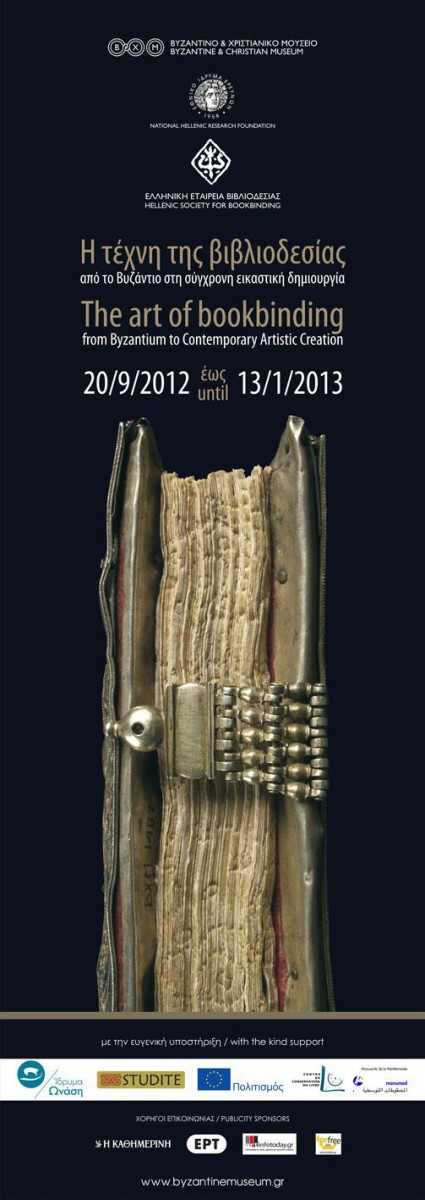Founded in 1914, the Byzantine and Christian Museum is one of the oldest museums in Greece devoted exclusively to Byzantine art and civilization. The whole of the museum’s collection of manuscript codices and incunabula highlights valuable material. The chronological range and varied geographical origins of this material tellingly elucidate the history and use of Byzantine and post-Byzantine codices, and especially the evolution of writing, illustration, and bookbinding.
The exhibition “The Art of Bookbinding from Byzantium to Contemporary Artistic Creation” is intended to highlight the particular art of bookbinding through an overview of its historical evolution—from Byzantium to our times—and to introduce the visitor to a different visual approach to books. Bookbinding is directly linked to the social history of the book, the use and function of manuscripts and printed books, and it reflects matters of collective mentalities rather than individual creation.
The books from the collection of manuscripts and incunabula of the Byzantine and Christian Museum and the Greek Library of the Alexander S. Onassis Public Benefit Foundation which are exhibited are excellent specimens of bookbinding techniques. But first and foremost these books represent important stages in the historical development of bookbinding. Dating from the 11th to the 19th centuries, they originate from the wider Greek mainland, the east Mediterranean, the Balkans, and the West.
The Library of the Alexander S. Onassis Public Benefit Foundation, in supporting Greek literature and art, integrated in its collections the Constantine A. Staikos Library, which ranges from the early Renaissance to the later years of the neo-Hellenic Enlightenment. This particular collection is significant largely because it sheds light on printing activity even in the remotest regions of Greek communities, and brings together the various elements that demonstrate the development of the art of bookbinding.
The illustrations in the collection of the Byzantine Museum presented in the exhibition bring out the role of the book and its depiction in Byzantine and post-Byzantine iconography. The development of the art of bookbinding from the codex to the printed book in the 19th century is shown through texts and audiovisual material. In exploring current readings of the tradition of the book as an art form, the exhibition has included contemporary artistic creations. Dimitris Xonoglou’s installation approaches the book as an object of figurative use. Venia Dimitrakopoulou’s creations are inspired by the Japanese tradition of bookbinding. The six collector’s copies of the book Kassiane the hymnodist are each illustrated by an artist—Markos Kampanis, Christos Markidis, Christos Bokoros, Kostas Papatriantafyllopoulos, Fotini Stefanidou, and Panos Fidakis. All of these works are creative components of the exhibition and boldly connect the past with the present.
The exhibition stems from the European programme ‘Studite’, which includes six participating European countries and which is concerned with the study of Byzantine and post-Byzantine bookbinding. It is hoped that this programme will contribute to the development of interdisciplinary and intercultural dialogue.
The exhibition is the culmination of a ten-year cooperation between the Byzantine Museum, the National Hellenic Research Foundation, and the Hellenic Bookbinding Society.
